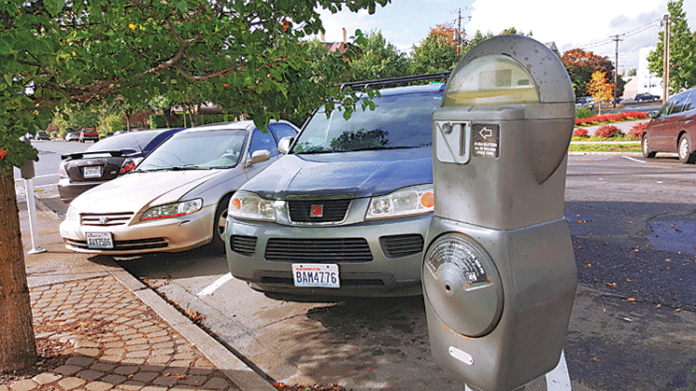
A lack of parking is a quick way to frustrate residents, deter tourists and make a living in an area a general hassle – but despite concerns, most developers say Vancouver’s downtown, uptown and Waterfront Development Project are well prepared to meet increased demand.
Concerns are being driven by the Waterfront Development Project and its anticipated role in increasing tourism. The site, when complete, will add restaurants, office space, residential units, parks, walking paths and other retail, which in turn should dramatically increase all kinds of traffic to the area. Barry Cain, owner of Gramor Development, which is spearheading the development, said his company has done a detailed analysis of the area and believes the two underground parking structures and above ground lots will be enough.
“I think we’ve got enough parking to handle things, but if we need more we can build more,” Cain said. “Nobody knows how busy it’s going to get.”
Gramor is planning to build 160 spaces under Block 6 and about 225 under Block 8. The company is also planning about 500 spaces for surface parking.
The Port of Vancouver is also working on both interim and permanent parking for its development at Terminal 1. The Port currently has 174 spaces that serve customers of the Warehouse ‘23 restaurant and event space.
“By the end of 2020, we plan to provide approximately 275 surface parking spaces on an interim basis to support Warehouse ‘23, Vesta Hospitality’s hotel and other activities during development of Terminal 1,” said Abbi Russell, communications manager for the port. “Long-term solutions will include parking inside each building, and the port is working with the city of Vancouver and Columbia Waterfront LLC to discuss a parking garage.”
The city of Vancouver currently has about 100 street spaces at the Waterfront, with more planned, said Steve Kaspan, parking manager for the city.
“Once the Waterfront Way Street is built and Columbia Way is extended, that number will increase,” Kaspan said.
The city also manages about 4,200 spaces (3,000 on-street, and 1,200 in garages and lots) in Vancouver’s downtown and uptown. Elie Kassab, president of Prestige Development, said he’s concerned that if the Waterfront parking doesn’t meet the demand it will create headaches for developers and residents in downtown and uptown.
“I personally do not think we have enough parking,” Kassab said. “I think we’re going to have to build some public parking garages.”
But the problem with that is public parking rates are still too low to justify the costs of a new public parking garage. For it to pencil out, you need to make something between $100 to $250 per space per month, Kassab said.
In general, parking structures cost between $40,000 and $60,000 per space to develop, Kaspan added.
“I think in the long run we’re going to need about 2,000 (more) parking spaces,” Kassab said, adding that both uptown and downtown could each need new structures as the Waterfront Project ramps up and brings more people to the area.
“At the moment, we’re almost OK, but I think we need to plan,” Kassab said. “If we don’t plan properly, God help us.”
Kaspan said it’s still hard to tell what will happen because they don’t yet know what traffic to the Waterfront will be like. There has been some discussion of extending C-Tran routes to the Waterfront, along with some discussions with Gramor to turn surface parking on Block 5 into a full parking structure in a few years if need demands it.
The city is also looking at building parking structures itself, but the same financial challenges exist in that for now, the parking rates don’t pencil out with the cost of the development. Another plan is to increase alternative transportation options, including public transit, bike commuting and ride sharing to help reduce demand, Kaspan said.
“Without downward pressure on demand for parking, the city estimates about 19 450-space parking structures would be needed to accomodate all of the anticipated growth in the area,” Kaspan said.
The city is also taking steps to increase hourly and monthly parking rates in an attempt to make the building of new spots more feasible.
“The city recognizes that historically low parking rates both on-street and public lots and garages has made it difficult for the private sector to obtain financing for private parking structures to be built,” Kaspan said.
Cain said changing those rates should help the situation, but he’s also ready to build more parking if it’s needed at the site.
“It’s a big project,” Cain said. “It’s going to be very popular. We’re going to be watching it closely.”


